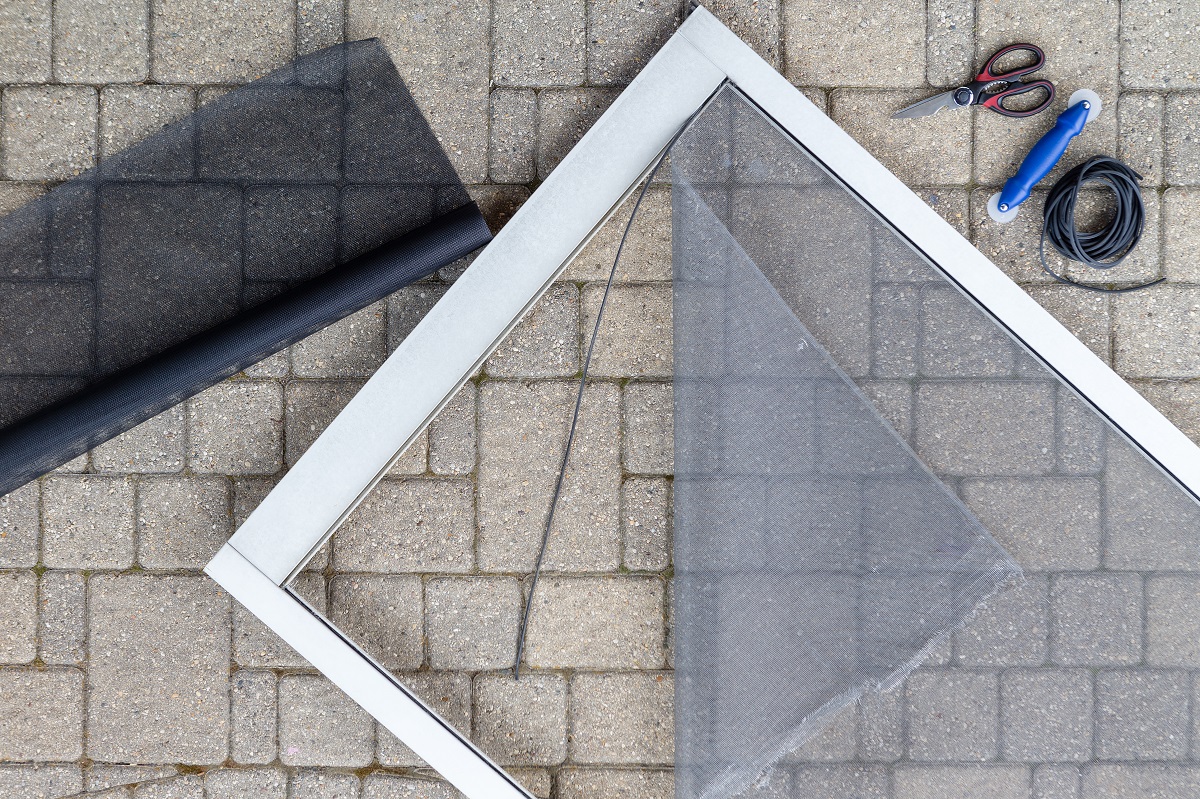
Security doors and windows are designed to last for years but, like everything else in your home, they still require regular maintenance. If you noticeyour screen door or window creaking or developing rust, those could be signs of poor upkeep.
Improperly or poorly maintained screen doors aren’t able to perform their intended function of improving your home security. They’re prone to all sorts of damage and can easily be broken into. Additionally, the manufacturer can void your warranty if your security doors and windows are damaged due to neglect.
With that, you need to include your security screens in your house cleaning checklist to make sure they continue to work as intended. Simply follow this guide on how to clean security screen doors and windows.
Materials Needed
Prepare the following items to start cleaning metal security screens:
- A bucket of warm water
- Mild detergent
- Soft-bristled cleaning brush
- Microfibre cloth or sponge
- Vacuum cleaner with a hose attachment
How to Clean Security Screens
1. Vacuum the screen
Before you wet the screens, you want to remove the loose dirt and dust using a vacuum. A compact, handheld vacuum cleaner or a regular one with a hose attachment would do, as long as it reaches the little nooks and crannies of the doors and windows.
Start on one side of the screen and vacuum from top to bottom. Make sure to use overlapping strokes as you work your way to the other side so you don’t miss a spot.
2. Wash the door and windows
Dissolve the mild detergent or whatever cleaning agent you chose in warm water; the heat will help loosen up the stubborn leftover dirt. Dip your sponge or microfibre cloth in the solution then wring the excess water out before using it to wipe the screens.
Wipe down the entire screen horizontally then vertically to get rid off the dirt caught in the grating. Dip and squeeze the sponge after every few passes to prevent grit from building up. You can use a soft-bristled brush to scrub away any gunk that has hardened on the screen, but be careful not to abrade the metal.
Repeat this step until the screens look clean and shiny again.
Once you’re done washing your security door and windows, rinse them down to remove traces of the cleaning solution. Your garden hose should be enough to do the job; just set it to the lowest pressure so as not to strop off the screen’s protective coating.
Pat the screens dry using a new microfibre cloth thenlet them air dry.
3. Clean the frame and track
You need to clean the frame and tracks of the door and windows to keep them moving smoothly. Open your security door and windows then wipe down all the grooves in the tracks and frame to remove any dirt and debris.
You can dip the cloth in the same cleaning solution that you used for the metal screens, but avoid the locking mechanism.If the mechanism gets wet, the door’s internal mechanisms could corrode and lead to a malfunction.
Wipe up the excess water afterward using a clean, dry towel. Leave your door and windows open for a half hour to let the tracks and frame air dry.
4. Wipe down and lubricate the hinges and locks
Wipe down the hinges and locks with a dry microfibre towel then test out their movements. If they move stiffly even after you’ve cleaned the screens, that means they need to be lubricated. Apply a dry lubricant, such as graphite powder, on the hingesand locksthen test the door’s and windows’ movements again.
5. Inspect screws and rivets
Finally, inspect the screws and rivets on your security doors and windows. If they have rust on them, you can use the same cleaning agent to try and clean it off. If that doesn’t work, then it’s time to replace your screws and rivets.
How Often Should You Clean Your Security Screens?
The recommended frequency of your cleaning depends on your environment. If you live in a highly industrialised city or right next to the ocean, it’s best to clean your security screens at least once a month because the dirt builds up quickly. Once every three months should be enough if you’re from a rural area.
Metal screens also collect more dirt during particular seasons. At certain times of the year, for instance, there are higher concentrations of pollen in the air, which can get trapped in your security screens.
The Don’ts of Cleaning Security Doors and Windows
- Don’t use abrasive cleaning items like sandpaper orsteel wool because these can scratch the finish of the security screen. You also want to avoid harsh chemicals and cleaning agents.
- Never use WD-40 or any oil to lubricate hinges and locks. Dirt and dust easily stick to these substances and they’re difficult to remove once they harden.
- Don’t use high-pressure water on security screens because it can damage the powder coating that protects against rust and scratches.
Keep Your Security Doors and Windows in Tip-Top Shape
Cleaning your security windows and doors ensures that they continue to serve their purpose of protecting your home from burglars and stray animals. Regularly inspecting the screens also gives you the chance to check them for holes or tears, which make them easier to break into.
If you think your security doors and windows are due for a replacement, call Safeway Security Screens for assistance. We’re a security screen manufacturing and installation business based in Perth, helping homeowners keep their families safe.
Choose from our marine-grade stainless steel, perforated aluminium and diamond grille aluminium screen options according to your security needs and budget. Fill our online form to schedule a free onsite security assessment and quote.


